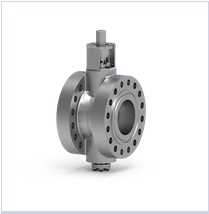Sep-2020
More petrochemicals with less capital spending
Even in nations with exceptional dependence on transportation fuels like Brazil, better integration with petrochemicals production is essential for refiners.
MARCIO WAGNER DA SILVA
Petrobras
Viewed : 13231
Article Summary
Recent market forecasts indicate a trend of reduction in the proportion of transportation fuels in the energy matrix at the global level. Faced with this, refiners have been looking at closer integration with the petrochemical sector, taking into account growing demand for petrochemicals intermediates (see Figure 1).
The current scenario presents major challenges for the crude oil refining industry: the price volatility of raw materials; pressure from society to reduce environmental impact; and refining margins increasingly lower. The newest threat to refiners is a reduction in the consumer market with news of countries that intend to reduce or ban the production of vehicles powered by fossil fuels in the medium term, mainly in the European market.
The search is on for alternative products to ensure the survival and sustainability of the refining industry. Better integration between refining and petrochemical production processes appears an attractive alternative. The production of petrochemical intermediates, beyond opening new markets for refiners, enables more added value in view of the higher product prices of these products when compared with streams dedicated to transportation fuels.
Petrochemical production has been growing at a considerably higher rate when compared with the transportation fuels market in recent years. Additionally, it represents a future for crude oil derivatives that is less environmentally aggressive. The technological bases of the refining and petrochemical industries are similar, which leads to possible synergies to reduce operating costs and add value to derivatives produced in refineries.
Figure 2 shows some possibilities for integration between refining and the petrochemical industry.
Process streams with low value for refiners like fuel gas (C2) are attractive raw materials for the petrochemical industry, just as streams considered residual by petrochemical producers (butanes, pyrolisis gasoline, and heavy aromatics) can be adapted by refiners to produce high quality transportation fuels. Table 1 shows some chief characteristics of the refining and petrochemical industries and the potential for synergies.
The potential for integration and synergy between processes relies on refining schemes adopted for the consumer market; for instance, process units such as fluid catalytic cracking (FCC) and catalytic reforming can be optimised to produce petrochemical intermediates to the detriment of streams that are incorporated in the fuels pool. In the case of FCC, units dedicated to produce petrochemical intermediates (petrochemical FCC) reduce the generation of streams to produce transportation fuels. However, capital investment is high since the severity of the process requires the use of expensive metallurgy for construction.
Refining technologies and low cost alternatives to integration
Historically, the refining industry has optimised its operations and developed technologies in the spirit of maximising production of transportation fuels to meet high demand. Figure 3 shows a typical configuration for a high complexity refinery focused on the production of transportation fuels.
The trend towards falling demand for transportation fuels, together with a growing petrochemical market, have led refiners to search for ways of optimising their hardware to raise the yield of petrochemicals to the detriment of fuels, thereby promoting closer integration with the petrochemical sector.
In this sense, flexible refining technologies such as FCC and catalytic reforming have gained prominence in the downstream industry since they are able to maximise the production of high added value petrochemical intermediates (olefins and aromatics, respectively). However, some refiners have seen the high cost of capital as a barrier to further integration with the petrochemical industry in view of the greater need for investment associated with units to maximise petrochemicals. The installation of units dedicated to the production of petrochemical intermediates requires high capital investment in high severity FCC units, or complex separation units dedicated to the production of light aromatics in the case of catalytic reforming units.
Despite the restrictions of capital investment, there are some alternatives to maximising petrochemical intermediates through refining hardware with relatively low capital investment. Fractionating straight-run naphtha can be an attractive alternative (see Figure 4).
In this case, the light fraction of naphtha may be directed to the market for higher value added petrochemical intermediates while the heavier fraction may comprise the gasoline, diesel or jet fuel pool, according to local market demand.
A conventional FCC unit can have its process variables optimised for the production of petrochemical intermediates (see Figure 5).
By changing the reaction severity, it is possible to maximise the production of petrochemical intermediates, mainly propylene, in conventional FCC units (see Figure 6).
The use of ZSM-5 in FCC catalysts can increase the unit’s propylene production by up to 8%, although recovery of propylene produced by the unit requires the installation of a dedicated separation unit (see Figure 7).
Despite the higher operating costs, higher revenues from derivatives should lead to a positive financial result for the refiner, according to current market projections. A relatively common strategy also applied to improve the yield of LPG and propylene in FCC units is the recycling of cracked naphtha, leading to over-cracking of the gasoline range molecules.
Another alternative for refiners with low capital availability is the installation of units dedicated to the recovery of olefins from refinery off-gases (see Figure 8).
The off-gases from deep conversion units such as FCC and delayed coking have a high olefin content (>20%). In markets with a high availability of natural gas, the installation of olefin recovery units tends to be economically viable for a refiner.
Categories:
Add your rating:
Current Rating: 5

















